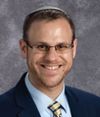Fake News and Purim
Alternative facts. Fake news. Distinguishing fact from falsehood has become one of the burning political issues of our time. And it’s not just a challenge in the political arena: in an age of mass information and the rise of independent media, a critical educational question has arisen: what analytical tools can we give our children to help them ferret out myths from facts? As Americans, moreover, we need to confront the fact that part of the difficulty stems from American culture itself, which, going back to the time of Puritans, contains a significant anti-intellectual strain. And while it’s true that intellectualism has its limits, the critical importance of literacy, education, and intellectual sophistication has perhaps never been greater.
Of course, it’s superfluous to state that Judaism is a strong proponent of intellectual engagement. In this space, however, I’d like to make an unconventional assertion, namely that the holiday of Purim celebrates precisely this value. Now, at first glance, this contention seems absurd. After all, Purim — filled as it is with hilarity, masks, and inebriation — is often portrayed as the one day a year when Judaism embraces irrationality. A closer look at the story, however, demonstrates that the opposite is true. To explain, let’s set the stage by examining a number of verses toward the end of the Megilla.
The battles have concluded, and the threat of extermination has been overcome. Haman and his ten sons have been hanged. Mordechai has been appointed Persian viceroy in his rival’s place. But one problem remains for Mordechai and Esther: how can they ensure that the holiday would last the test of time? After all, Jewish history is littered with celebrations that have come and gone. What would ensure the staying power of Purim?
After considering their options, the leaders hatch a plan. Mordechai, following Persian court protocol, sets down the holiday and its observances in letter form, mailing the missive to Jews throughout the far-flung Persian empire. The people respond by “irrevocably obligat[ing] themselves and their descendants, and all who might join them, to observe these two days in the manner prescribed and at the proper time each year.” To be certain, Esther and Mordechai disseminate a second letter containing similar details. The chapter concludes by recording that “Esther’s word established these matters of Purim, and it was written in a book.” Simply understood, the verse means that had Esther not precisely transcribed, circulated and recorded the Purim story for posterity, the holiday would not have have stood the test of time. The careful dissemination of knowledge was key to ensuring that Purim would become a fixture on the Jewish calendar.
Notably, the rabbis amplified this intellectualized portrait of the Purim story, underscoring the centrality of education to the protagonists’ profiles. Mordechai, on their interpretation, was a member of the Sanhedrin, the highest Jewish court. Moreover, the Talmud interprets Esther and Mordechai’s second letter as a successful effort to persuade the leading scholars of the generation to establish the holiday and even canonize the book of Esther. Scholars and scholarship, for the rabbis, were imperative to the holiday’s success.
In fact, the events of Purim were part of a wider transformation afoot at the beginning of the Second Temple period, during which Jews took their largest leaps toward becoming the People of the Book. In particular, Ezra and Nechemiah, near contemporaries of Esther and Mordechai, highly influential leaders of the early Second Temple Judean community, established a radically new leadership paradigm. As opposed to the prophets, whose tenures were marked by oracular insight and charismatic pronouncements, Ezra and Nechemiah manifested a more analytical model of leadership. Ezra was a first-rate scholar. Not by coincidence, the Bible identifies him as a “sofer, scribe,” which is drawn from the root “sefer, book,” the same term used to describe Esther’s letter. Nechemiah was a political leader who relied on strategic ingenuity and his own not-insignificant scholarship to establish the returnees on firm security, economic and religious foundations. The biblical book Ezra-Nechemiah utilizes an implicit interpretive methodology in delimiting the scope of a wide range of biblical laws. Esther and Mordechai, then, along with Ezra and Nechemia, operated at the dawn of the rabbinic period, which ushered in a great intellectual renaissance in Jewish history and leadership.
Indeed, our commitment to education has only increased since the events of Esther. Torah study, in the rabbinic tradition, occupies a strikingly central place; the Mishnah goes so far as to assert that it is the equivalent of all the other commandments combined. Jewish parents are obligated to provide educations for their children, even at significant personal cost. Jews were arguably the first to establish mandatory universal education for all boys. Jewish female literacy, while limited until the modern period, often outstripped that of our medieval neighbors.
Maimonides and many others championed the exploration of Western wisdom. Over 22 percent of Nobel Prize recipients are descended from Jewish ancestors, despite the fact that Jews make up less than 0.2% of the world population. Even setting aside traditional scholars, famous modern Jewish intellectuals include Franz Kafka, Marcel Proust, Sigmund Freud, Susan Sontag, Niels Bohr, Albert Einstein, Milton Friedman, and Robert Aumann, to name just a few.
Unexpectedly, then, Purim emerges as a celebration of intellectual achievement. While it is also true that a religion of pure intellect is impoverished and incapable of inspiring the masses, the upcoming holiday also reminds us of the fierce Jewish commitment to the pursuit of Torah study, the best of worldly wisdom, and the development of critical thinking skills.
Our times call on us to strengthen our commitment to develop and disseminate the tools necessary to combat falsehood and embrace truth. Esther and Mordechai, after all, would demand of us nothing less.
